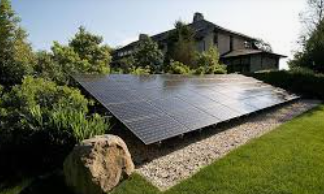Introduction:
As the cornerstone of clean, renewable energy production, solar panels have revolutionized the way we power our homes and businesses. However, to ensure optimal performance and longevity, regular maintenance is essential. In this comprehensive guide, we delve into the importance of solar panel maintenance, offering practical tips and expert advice to help homeowners and businesses maximize the efficiency and lifespan of their solar energy systems.
Understanding the Importance of Solar Panel Maintenance:
Solar panels are designed to withstand harsh weather conditions and operate efficiently for decades. However, exposure to sunlight, dust, debris, and environmental factors can gradually degrade their performance over time. Routine solar panel maintenance helps mitigate these effects, ensuring that solar panels continue to generate maximum electricity output and deliver a solid return on investment. By incorporating regular maintenance into their energy management practices, homeowners and businesses can safeguard their solar investments and prolong the lifespan of their systems.
Key Maintenance Tasks for Solar Panels:
- Regular Cleaning: Dust, pollen, bird droppings, and other debris can accumulate on the surface of solar panels, obstructing sunlight and reducing energy production. Periodic cleaning with water and a soft brush or sponge can remove dirt and grime, restoring optimal sunlight absorption and efficiency. Ideally, solar panels should be cleaned every few months, or more frequently in dusty or high-pollen areas.
- Inspection for Damage: Visual inspection of solar panels is essential to identify signs of damage, wear, or degradation. Check for cracks, scratches, hot spots, or discoloration on the surface of the panels, as these can indicate potential issues that may affect performance. Additionally, inspect mounting hardware, wiring, and connections for signs of corrosion, loose bolts, or damage.
- Trimming Vegetation: Overhanging branches, leaves, or foliage can cast shadows on solar panels, reducing their efficiency and energy output. Trim trees, shrubs, and vegetation to ensure that solar panels receive maximum sunlight exposure throughout the day. Consider planting low-growing or shade-tolerant plants around the perimeter of solar arrays to minimize shading.
- Monitoring System Performance: Utilize monitoring software or tools provided by your solar installer to track the performance of your solar energy system regularly. Monitor energy production, voltage, and other key metrics to identify any anomalies or deviations from expected performance. Early detection of issues allows for timely intervention and troubleshooting to prevent further damage or loss of efficiency.
- Professional Maintenance and Servicing: While many maintenance tasks can be performed by homeowners, it is advisable to schedule periodic professional inspections and servicing by certified solar technicians. Professional maintenance ensures thorough cleaning, inspection, and servicing of solar panels, inverters, wiring, and other system components, optimizing performance and addressing any potential issues before they escalate.
Conclusion:
Solar panel maintenance is a fundamental aspect of owning a solar energy system, ensuring that it continues to operate efficiently and reliably for years to come. By incorporating regular cleaning, inspection, and professional servicing into their maintenance routines, homeowners and businesses can protect their solar investments, maximize energy production, and contribute to a more sustainable future. With proper care and attention, solar panels can continue to shine brightly, powering homes and businesses with clean, renewable energy for generations to come.





